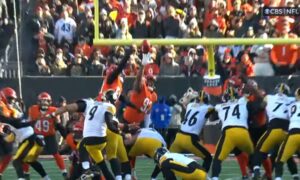Over the course of the past couple of years, the Pittsburgh Steelers have undergone an uncommon amount of change, which could have been largely correlated with the fact that the team had finished 8-8 in consecutive seasons while failing to advance to the postseason.
In deference to general manager Kevin Colbert, the attitude used to approach the offseason in those years was that this was an 8-8 team and these were 8-8 players. It’s little surprise that a lot of things changed during those years.
Though former Steelers outside linebacker Jason Worilds may not be remembered particularly well in 20 years due to his limited impact upon the franchise, his departure from the team does represent a significant upheaval from 2014 to 2015 in terms of how it affects the weekly operation of the defense during the season.
This is because—in contrast to his reputation from earlier in his career—Worilds was a bit of an ironman for the Steelers in 2014, logging the most snaps on defense of all players on the team, just a touch under 1000 in total. The year before, Worilds had played less than 800 snaps due to injury and an inconsistent status as starter.
That changed after the breakout back half of his 2013 season, and he became an integral part of their plans for 2014, which, even if it came at a cost of nearly $10 million, proved to be valuable.
The current plan to replace him seems to be to start out with Arthur Moats on the left side, who had logged a half-season’s worth of nominal starts at right outside linebacker in place of the injured Jarvis Jones, who only started the first three games before a wrist fracture derailed his sophomore campaign.
Moats performed well in rotation with James Harrison—a rotation that gradually favored the latter until Moats was hardly playing. But he posted the most efficient pass-rushing numbers on the team, registering a career-best four sacks on under 200 rushes. He also proved to be solid against the run, and the coaching staff believes that his size will translate well to the strong side of the defense.
Moats is an interesting player, who has an impressive physical skill set, but lacks the pedigree and the prior opportunities to ever demonstrate what he may be fully capable of, and one wonders if that pattern will continue sooner rather than later.
That is because, of course, the Steelers used their first-round selection this past draft on Bud Dupree, who is logging second-team reps at left outside linebacker behind Moats. And unlike most of their rookie outside linebackers, Dupree not only played the position in college, he was also versed in dropping into coverage, which should ease his transition into the system.
That could translate into increased playing time at an accelerated pace, regardless of how Moats actually performs in his own role. From one season to the next, we could very well go from a player who logged nearly every snap to a consistent rotation of two players at one of the most important positions in the 3-4 defense.








